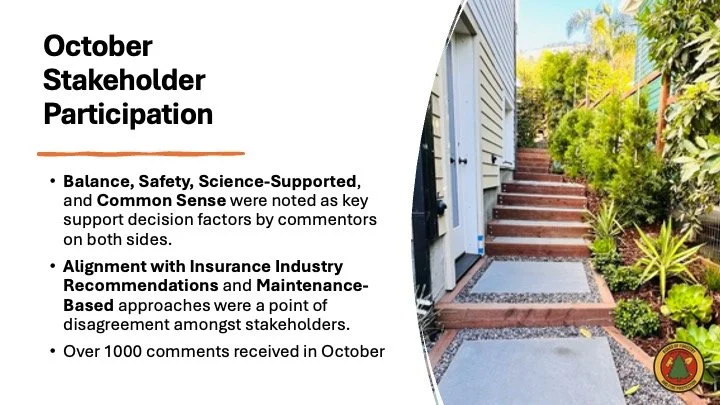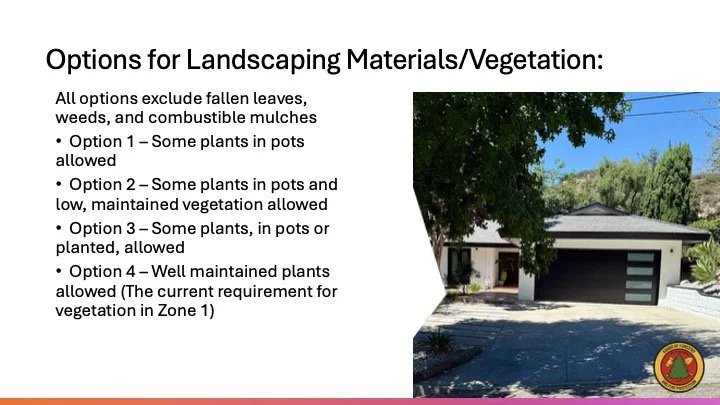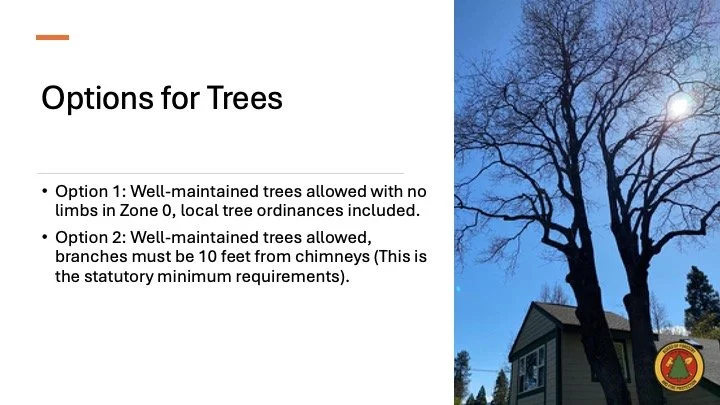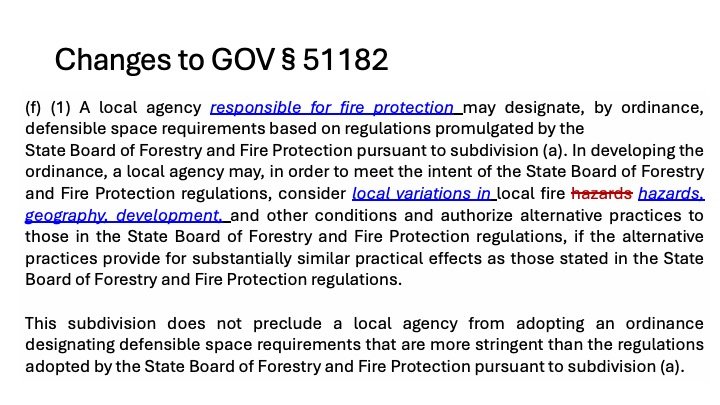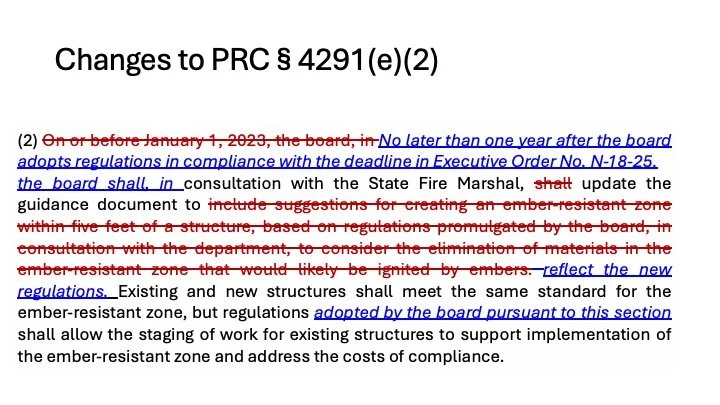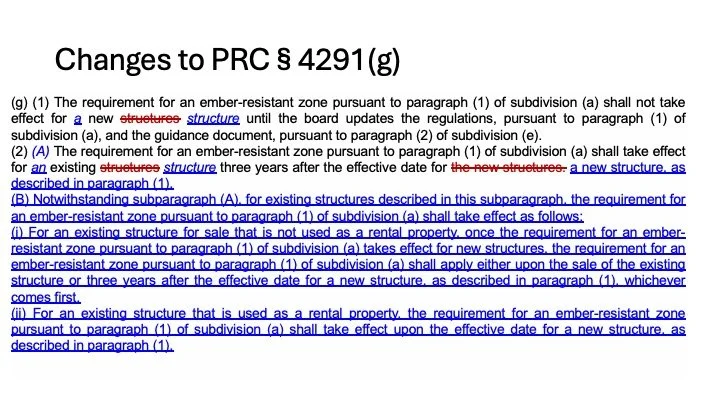The Board of Forestry (BOF) and its Zone 0 Advisory Committee met during the first week of November. The materials presented to attendees are available here. There is a ppt by the chair of the advisory committee titled “Drafting and Implementing Zone 0”. It’s pretty clear that the BOF is staggering to the finish line, determined to adopt the most restrictive regulations possible given the pressure they are under. We’re not expecting good news for homeowners in December.
The rule making for Zone 0 Timeline was presented:
•Committee Directs Staff to prepare rulemaking documents at the December Meeting (12/10/25).
•Full Board approves emergency rulemaking package at January meeting (1/14/2026)
•Notice rules late January
•Submit to OAL late January/early February – begin emergency comment period
•Emergency rules in effect early February.
•If OAL review/comments reveal a need for updates, Board will consider amended emergency rulemaking package at March meeting. Emergency rules in effect in April.
•Continue standard rulemaking process in Committee/before the Board.
This process can extend beyond December 31st because yet another bill, AB 1455, was passed last month providing emergency rulemaking procedures.
Here’s the ED’s takeaways from all of the October input.
Note the Insurance Industry Recommendations vs Maintenance-Based approaches bullet.
Insurance industry = plants burn so remove them.
Maintenance Based = trim trees and bushes, remove leaf litter but keep the plants.
The presentation included a slide on the options presented in October. We don’t think they are considering them seriously.
Here’s something we haven’t seen presented before. This is the what comes next and why rules.
They were adopted by the legislature after the Governor’s executive order and then amended a month later.
Notice the rental homes language in the second slide.
We think what this means is that once the BOF adopts the regs in early 2026, then the clock starts ticking for a guidelines document which must be finished within one year.
At that point, all new construction and existing rental homes must be in compliance with Zone 0 regs.
FIREWISE USA Monthly Workshop Zoom Registration
Ventura Regional Fire Safety Council's monthly Firewise USA® Workshop is hosted on the third Friday of every month via Zoom. The workshop is open to the public (online only) and begins at 1:00pm. It lasts 1-2 hours. Register in advance. Visit VenturaFireSafe.org for more information.
Why go to an agency sponsored local meeting?
We think it’s important to send a message that the community is concerned. Many have reported back that incorrect information is being shared by presenters and that there is a feeling that anyone who questions the implementation of Zone 0 regulations is being irresponsible.
Come prepared with questions. Listen carefully. Take notes. Report back.
Want to pass out information flyers at a meeting or in your neighborhood? Click Here
A community Town Hall was held in September - recording available
September 17 Community Town Hall: California’s Draft Zone 0 Wildfire Regulations
Hosted by District 2 County Supervisor, Jeff Gorell
youtube Link: https://www.youtube.com/live/kEPhpZKHD1k
Panel lineup:
J. Lopez, Board Member, California Board of Forestry & Fire Protection
Yana Valachovic, Scientist with the University of California, Agriculture and Natural Resources Fire Network
Steve Hawks, Senior Director of Wildfire, Insurance Institute for Business & Home Safety
Stephen Watson, Executive Director, Ventura Regional Fire Safe Council
Joe Morelli, Fire Marshal, Ventura County Fire Department
Dr. Betsy Connolly, Community Leader, Zone Zero Conejo Valley Community Group
Greg Rubin, best-selling author, horticulturist, retired aerospace engineer
